Welcome to the May 2016 issue of the Global Washington newsletter.
IN THIS ISSUE
- Letter from our Executive Director
- Question of the Month
- Issue Brief: Control, Eliminate, Eradicate: Global Efforts to Wipe Out Disease
- Featured Organization: PATH
- Changemaker: Ananda Bandyopadhyay, Senior Program Officer, Bill and Melinda Gates Foundation
- GlobalWA Member Events
- Career Center
- GlobalWA Events
Letter from our Executive Director
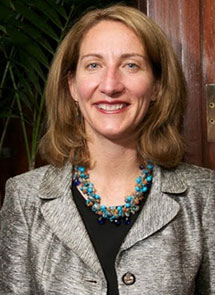 Washington state has a vibrant global health community and is a leader in efforts to eliminate and eradicate diseases that plague developing countries such as polio, malaria and guinea worm. We have made tremendous progress to eradicate polio and guinea worm, and are emboldened by the Bill & Melinda Gates Foundation’s declaration that malaria can be eliminated with sufficient investments, ambitious strategies and new technologies.
Washington state has a vibrant global health community and is a leader in efforts to eliminate and eradicate diseases that plague developing countries such as polio, malaria and guinea worm. We have made tremendous progress to eradicate polio and guinea worm, and are emboldened by the Bill & Melinda Gates Foundation’s declaration that malaria can be eliminated with sufficient investments, ambitious strategies and new technologies.
This month, Global Washington formed a special partnership with the Washington Global Health Alliance to spotlight the work of the global health community in our state in the race to wipe out infectious disease. None of this will be easy. In fact, it might be the most difficult thing the global health community has faced. But with organizations such as PATH, Malaria No More and the Gates Foundation leading the way, Seattle will be known as a driving force in making a healthier and more prosperous world. Read more about these local champions in the issue brief below.
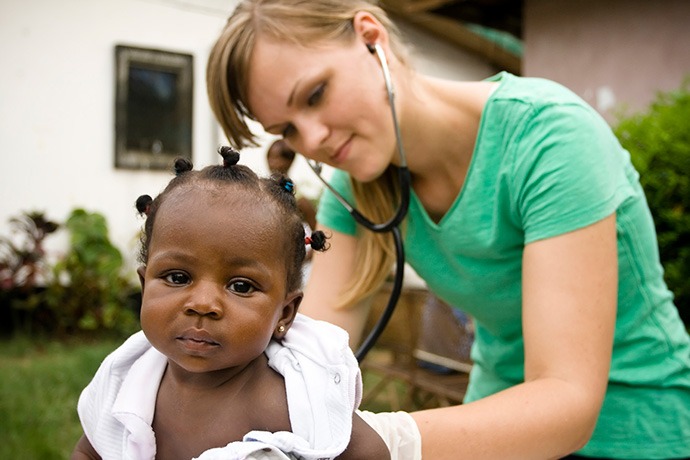 We celebrated progress made in global health at last week’s Spring Member Celebration, in addition to recognizing achievements in other areas such as financial services, global education, economic development and land rights. Thank you to everyone who attended and partied on the dance floor. I continue to be inspired by this tremendous community of people.
We celebrated progress made in global health at last week’s Spring Member Celebration, in addition to recognizing achievements in other areas such as financial services, global education, economic development and land rights. Thank you to everyone who attended and partied on the dance floor. I continue to be inspired by this tremendous community of people.

Kristen Dailey
Executive Director
Question of the Month
![]() Did your organization participate in GiveBIG on May 3-4 this year?
Did your organization participate in GiveBIG on May 3-4 this year?
Issue Brief
Control, Eliminate, Eradicate: Global Efforts to Wipe Out Disease
By Amanda Pain
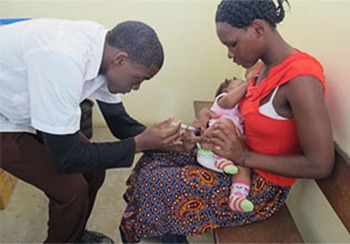
Photo Credit: VillageReach
In 1980, the World Health Organization (WHO) announced the eradication of smallpox, the first and only infectious disease to meet this fate. Eradication of a disease is defined as the permanent reduction to zero of the worldwide incidence of infection. The road to eradication includes stops at control, the reduction of disease incidence, prevalence, morbidity or mortality to a locally acceptable level, followed by elimination, the reduction to zero of the incidence of infection in a defined geographical area.
Smallpox has several characteristics that made eradication possible: an effective vaccine which could prevent infection with a single dose, highly visible symptoms with a short incubation period, and transmission occurring only human-to-human. Since the last known case of smallpox, The International Task Force for Disease Eradication has been coordinating efforts to rid the world of infectious diseases. However, each disease is unique and has its own set of challenges on the path to eradication. To illustrate how diseases differ in treatment, interventions and challenges, this article will focus on global efforts to eradicate polio, guinea worm and malaria.
Polio, also called poliomyelitis, is believed to be the next infectious disease in line for eradication because it has been eliminated everywhere except for Afghanistan and Pakistan. Polio is a viral infectious disease transmitted from person to person through the fecal-oral route. The virus primarily affects children under age five, and one in 200 infections can lead to irreversible paralysis. Polio cases have decreased by 99 percent since 1988, and in 2015 there were only 22 reported cases of polio worldwide. This reduction is due to coordinated efforts of The Global Polio Eradication Initiative (GPEI). In order to tackle the two remaining endemic countries with polio, the GPEI developed the Polio Eradication and Endgame Strategic Plan 2013-2018 to rid the world of polio by 2018.
Polio eradication strategy involves the immunization of every child, strong surveillance to detect and interrupt transmission and a long-term plan to ensure vulnerable countries do not see reemergence of infection. In April, a new bivalent oral polio vaccine started being distributed globally. This new vaccine protects against polio types 1 and 3 (type 2 was eradicated in 1999) and is stronger than the previous oral vaccine. Many of the challenges to eradicating polio are due to instability in Afghanistan and Pakistan. The remaining areas with polio infection are isolated and people have limited access to vaccines, and face security problems.
Guinea worm disease, also known as dracunculus medinensis, is caused by a parasitic worm which enters the body through ingestion of contaminated water. When a person drinks the worm larvae living in nearby water sources, the larvae migrate through intestinal walls, mate, and after 10 to 14 months the pregnant female extracts itself painfully from the foot of the host. The adult female worm carries three million embryos, and can measure 60 to 100 centimeters in length. For pain relief, infected people place the affected area in water, releasing the larvae back into the water source for the next victim. There is no treatment to prevent infection or heal a person of guinea worm. While rarely fatal, a person can suffer from infection at the site of extraction leading to skin ulcers and permanent disability. Eradication of guinea worm depends solely on access to clean drinking water.
The good news is that, in 2015, there were only 22 reported cases of guinea worm in four countries (Chad, Mali, South Sudan and Ethiopia). Eradication efforts include detecting cases within 24 hours, health education and ensuring access to safe drinking water. Since 1986, The Carter Center has led the international campaign for guinea worm eradication, and today cases have been reduced by 99.99 percent. Once eradicated, it will be the first parasitic disease to meet this fate, as well as the first disease eradicated without the use of vaccines or medications. Challenges to guinea worm eradication include infections in remote areas where interventions can not reach people, as well as dogs hosting the parasite which has led to increased human transmission in Chad and Ethiopia.
Malaria is an infectious disease of the blood caused by the plasmodium parasite and is transmitted from person to person by the female anopheles mosquito. Once the parasite enters the body, it lodges in the host’s liver, multiples, and enters the blood stream to infect red blood cells. Without treatment, malaria leads to death. In Africa, a child dies every two minutes from malaria and, in 2015, there were an estimated 214 million cases of malaria worldwide (mostly in pregnant women and children). In 2015, sub-Saharan Africa accounted for 88 percent of malaria cases and 90 percent of malaria deaths. Approximately half of the world’s population is at risk of malaria, but the disease is preventable and curable.
The Global Malaria Eradication Program launched by WHO in 1955 was the first attempt at eradicating malaria. The program was criticized for its one-size-fits-all approach, lack of community involvement and lack of research and evaluation on intervention methods. It was abandoned in 1970. Since 2000, improved interventions have decreased the incidence of malaria by 37 percent globally, and mortality rates in children under age five have fallen by 58 percent. Interventions today include rapid diagnostic tests, malaria medications for treatment and prevention, availability of insecticide treated bed nets (since mosquitos carrying the virus feed at night) as well as indoor insecticide spraying. A malaria vaccine is also in development. The new goal is a major reduction of malaria cases and deaths by 2030 and the WHO Global Technical Strategy for Malaria 2016-2030 outlines a plan to achieve this.
Malaria has a longer and more challenging road to eradication when compared to polio and guinea worm, but important achievements are being made in the fight to end malaria. In April, Europe was the first region in the world to be certified as malaria-free by the WHO. This is defined as zero locally acquired malaria cases for three consecutive years. Two major challenges to other regions of the world becoming malaria-free are insecticide resistance by mosquitos and medication resistance by strains of the virus. Another challenge is that a majority of transmissions start with asymptomatic people, requiring medical professionals to diagnose patients who have yet to show symptoms, and then treat them before transmission can occur.
Polio, guinea worm and malaria are unique diseases each with their own unique challenges, much like other infectious diseases that are causing death and disability around the world. While the road to eradication for each disease has many paths and varies in length, global health organizations must continue to collaborate and pursue solutions. Below are several GlobalWA members working towards eradication of infectious diseases. Learn more about these organizations and others on our interactive member map.
Health & Hope Foundation (HHF) provides dental, vision, non-surgical medical care and preventative healthcare education tools to impoverished communities who otherwise lack access or means for care. Clinics are on-site and portable allowing for access to rural areas. By teaming with local leaders, specific community needs such as disease prevention, clean water, light, education, sexual safely, safe living conditions and sustainable business are illuminated. Local leaders are developed to address these needs within HHF programs or by linking them with specialized NGOs. www.healthandhopefoundation.org
Malaria No More (MNM) is working to create a world where no child dies from a mosquito bite. Using strategic advocacy and innovative partnerships to engage global leaders, rally the public and deliver lifesaving tools and education to families across Africa, MNM aims to create the political will and mobilize the global resources required to achieve malaria eradication within our generation. They work with leaders of malaria-endemic countries in Africa, Asia and Latin America to increase the amount of attention and funding they commit to malaria each year, elevating it on the global health and international development agenda. www.malarianomore.org
Medical Teams International works to stem the tide of communicable diseases among vulnerable populations in locations where access to health care and medicine is lacking. In Uganda, this means curbing malarial infections, particularly among refugees. Medical Teams was instrumental in quelling the deadly cholera outbreak that swept through Haiti following the devastating 2010 earthquake, and preventing further outbreaks. And in Liberia, Medical Teams has worked to build durable partnerships to strengthen health systems in the fight against Ebola. Through clinical case management, prevention, education and early diagnosis, Medical Teams aims to stamp out the spread of deadly diseases around the globe. www.medicalteams.org
PATH is a leader in global health innovation. An international nonprofit, PATH saves lives and improves health, especially among women and children, and works alongside countries primarily in Africa and Asia to tackle their greatest health needs. With a network of partners, both in the Pacific Northwest and around the world, PATH advances high-impact, low-cost approaches to not only manage and control stubborn diseases, but to end them completely. Recently, PATH and their partners helped vaccinate more than 235 million people against meningitis A in sub-Saharan Africa — nearly eliminating it as a major health threat in the span of five years. Through the PATH Center for Malaria Control and Elimination, the organization is building on their unparalleled portfolio of malaria tools and projects — including cutting-edge research and development of malaria drugs, diagnostics, and vaccines — to advance efforts toward elimination. PATH’s work in disease elimination also includes diagnostics and other tools to fight polio and neglected tropical diseases like river blindness and lymphatic filariasis. www.path.org.
With over 16 million cases of malaria per year in a population of only 34 million, Ugandans have the highest malaria transmission rates in the world, and status quo measures are not reducing malaria fast enough. In partnership with Uganda’s Ministry of Health, Rotary International, Seattle #4 Rotary Club and Peace Corps Uganda, Pilgrim Africa is charting a course for the most cost-effective, safest and fastest way to reduce malaria in high transmission settings. Pilgrim Africa’s newest operational research project combines and sequences the most effective malaria interventions for mosquito control and medical management in order to rapidly reduce malaria transmission and maintain the new lower rates. This intervention is predicted by mathematical modeling to remove over 90% of the death and disease caused by malaria and to provide a cost-effective solution at scale. www.pilgrimafrica.org
The Bill and Melinda Gates Foundation
Founded in 1997, the Bill & Melinda Gates Foundation works in developing countries to improve people’s health and to lift them out of extreme poverty. The Foundation’s global health and development work uses advances in science and technology, and works with partners in developing countries to deliver vaccines, drugs and diagnostics. The Gates Foundation works to find new solutions and interventions to improve efficiency and effectiveness and ensure these methods reach those most in need. The Foundation also invests in vaccines for HIV, polio and malaria, as well as supports integrated health solutions for family planning, nutrition and maternal and child health. www.gatesfoundation.org
UNICEF, the world’s largest buyer of vaccines, provides immunization for forty percent of the world’s children. Today, infant and childhood vaccination saves up to 3 million children’s lives a year. Conflict, displacement and poverty keep some of the most vulnerable children from getting the vaccines they need. If all children were immunized with existing vaccines, by 2020 we would save nearly 25 million lives. Thanks to UNICEF and partners’ global immunization and vaccine efforts, polio has almost — but not quite — disappeared. In 2014, India joined the ranks of the polio-free, a major achievement thanks to lifesaving polio vaccines, and in 2015, Nigeria reached a milestone when it went a full year without a single case of polio. www.unicefusa.org
VillageReach increases access to quality healthcare by improving the capacity and efficiency of health systems in the world’s most underserved communities. With a particular emphasis in last mile supply chain systems, VillageReach has developed innovative approaches to improve transport and logistics for vaccine delivery and other essential medicines, including HIV medicines and other related supplies to test and treat infectious diseases. www.villagereach.org
Featured Organization
PATH
By Amanda Pain
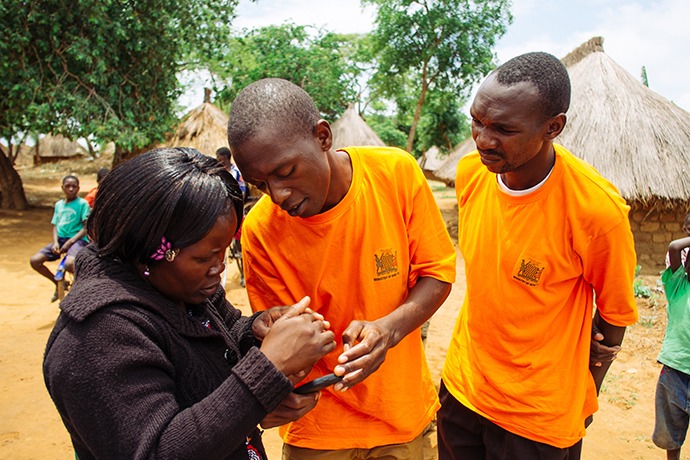
A data collector, community health worker and district malaria focal person look at a mobile phone with the village of Harmony in the background. Photo Credit: PATH/Gabe Bienczycki.
Malaria, an infectious disease of the blood caused by the plasmodium parasite, is responsible for over 400,000 deaths and nearly half of the world’s population is at risk of infection each year. Spread through mosquitoes, malaria affects millions of people in sub-Saharan Africa, especially pregnant women and children. Eliminating a disease that infects so many people requires a smart and strategic approach. PATH, an international nonprofit organization headquartered in Seattle, understands this.
“PATH works on a number of platforms to address malaria,” said Dr. Nanthalile Mugala, Country Program Leader for Zambia. “PATH is not just working at the system and service implementation level, but also addresses innovations in new drugs, diagnostics, as well as vaccine candidates that could reduce malaria prevalence.”
PATH contributes to the control and elimination of malaria in endemic countries and has worked with partners to save 6.2 million lives over the past 15 years through scale up of malaria interventions. PATH’s Center for Malaria Control and Elimination brings together expertise to develop new and improved tools and approaches to attack the deadly disease. PATH has pioneered innovations to improve diagnostic tools, increase malaria drug supply, and has helped to develop what could become the first-ever licensed malaria vaccine, MosquirixTM. PATH also partners with national governments and local communities. For example, the Malaria Control and Elimination Partnership in Africa (MACEPA) has partnered with the Zambian government to reduce malaria prevalence in parts of Zambia, according to Mugala.
“Whatever work we do as non-governmental organizations (NGOs), can only be effective if we work with government systems,” said Mugala. “One of PATH’s key mandates is to ensure capacity building among local people to help sustain progress.”
The World Health Organization (WHO) has a global strategy to reduce incidence of malaria by 90 percent, and to eliminate it in 35 countries by 2030. Mugala believes PATH has contributed to the global reduction of malaria, and will be a key player in the WHO strategy. In Zambia alone, PATH has been working to reduce malaria since 2004 and is helping the Zambian government eliminate malaria by 2020, ten years earlier than the WHO target. Mugala said the Zambian government believes this 2020 target is possible partly because PATH’s efforts in partnership with the Zambian government’s National Malaria Control Centre have led to large reductions in malaria prevalence in Southern Province.
PATH has also helped Zambia improve its data collection methods. “Having credible data regarding the magnitude of the problem in various geographical areas helps to focus resources,” said Mugala. PATH has strongly supported the government in data management efforts to strengthen malaria programs.
Mugala believes PATH has also been instrumental in engaging local communities and training health workers to test and treat people for malaria. “National level commitment and pronouncements can be made, but I think ultimately the people at the household level will make elimination a success.” PATH works with community leaders to attain village engagement and holds community meetings to explain malaria transmission and prevention. The meetings also help communities learn what is happening, and take ownership of the malaria program activities. “Malaria is a household name in Zambia,” said Mugala, “but people are not always clear on how it is transmitted.” She emphasized that engaging communities and giving people the tools to prevent malaria is critical in achieving elimination.
Trained as a medical doctor, Mugala spent 15 years practicing medicine before moving full-time into the public health sphere. “One of the things that doctors and nurses would complain about in Zambia was how full the hospitals always were,” she said. “You wonder why this person is coming so late to the hospital often in a severe condition. When you are working in public heath, you actually have a chance to contribute to preventing disease and promoting interventions that improve access to appropriate timely treatment services so people won’t end up in the hospital.”
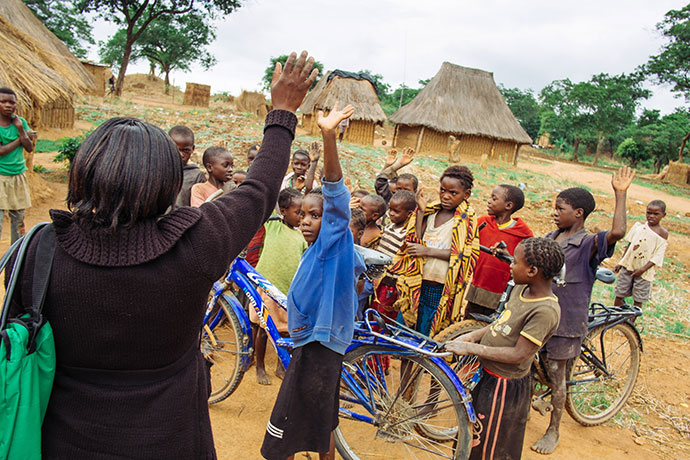
Racheal Mokosha, District Malaria Focal Person, stands in front of a crowd of children in Harmony village. Photo Credit: PATH/Gabe Bienczycki.
Prevention methods used in Zambia include providing households with insecticide treated bed nets, as well as conducting indoor residual spraying of insecticides. Mugala said PATH also helps to train community health workers to test and treat for malaria. If a household has a positive case of malaria, the health worker will test everyone in that household and in surrounding households. Anyone with a positive result receives treatment immediately. To date, PATH has contributed to the training of more than 2,500 of these health workers — volunteers chosen by their communities — in surveillance to identify, contain and clear malaria infection in their villages.
The Zambian government, with assistance from PATH and other partners, is forming a strategy to eliminate malaria by 2020. Mugala believes the biggest challenge to this goal is ensuring that Zambia has the required financial and human resources. She also stressed the importance of working with neighboring countries to monitor and reduce transmission across borders. “I am happy that we have set a benchmark. It is going to be hard work and we will need sustained commitment and adequate resources.”
Mugala believes, if Zambia succeeds in eliminating malaria, sub-Saharan Africa can use the country as a model to control and eventually eliminate malaria in other African countries. “Often having the evidence that something can be done motivates everybody to want to try,” said Mugala. “PATH has been consistently and successfully working on malaria for the past ten years, and it is highly respected. You cannot mention malaria right now without mentioning PATH’s contribution.”
Changemaker
Ananda Bandyopadhyay, Senior Program Officer, Bill and Melinda Gates Foundation
By Amanda Pain
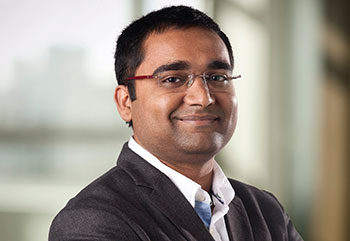 Ananda Bandyopadhyay has what he calls a love-hate relationship with polio. While he was never particularly fascinated with polio as a topic as a medical student, he witnessed many peers suffering from the disease. “Growing up in India was really my exposure to the real world, in terms of what diseases really mean beyond the medicine books,” he said. With the ultimate vision of being a cardiologist, Bandyopadhyay was a young medical graduate when he took a job at the World Health Organization’s (WHO) National Polio Surveillance Project (NPSP).
Ananda Bandyopadhyay has what he calls a love-hate relationship with polio. While he was never particularly fascinated with polio as a topic as a medical student, he witnessed many peers suffering from the disease. “Growing up in India was really my exposure to the real world, in terms of what diseases really mean beyond the medicine books,” he said. With the ultimate vision of being a cardiologist, Bandyopadhyay was a young medical graduate when he took a job at the World Health Organization’s (WHO) National Polio Surveillance Project (NPSP).
“A few months into my new job in the (polio) eradication program I was completely fascinated. I never would have realized public health would have so much impact,” said Bandyopadhyay. What initially was billed as only a six-month break from practicing medicine, he ended up staying at WHO for four years, and went on to receive a Master’s degree in global health from Harvard University. Currently a Senior Program Officer with the Bill & Melinda Gates Foundation’s polio program, polio has become Bandyopadhyay’s life’s work.
A highly infectious viral disease largely affecting children under age five, polio has been reduced globally by 99 percent since 1988. When Bandyopadhyay took the position at WHO, India was highly endemic with a rapid transmission rate. He said the most challenging part of elimination in India was reaching everyone. “You knew that the vaccine worked, but you could not just administer it once. You actually had to go back to the same remote village over and over again to essentially beat the speed of transmission with the speed of your vaccination activities. It’s incredible now looking back that India actually succeeded.”

Bandyopadhyay examining an infant in Moradabad, Uttar Pradesh, India.
Bandyopadhyay described the work to eliminate polio in India as a social movement that went beyond a health program. Health workers had to overcome social and economic challenges, deal with language and cultural differences, as well as ensure that local and national governments were committed to eliminating the disease. According to Bandyopadhyay, India is an example to the world that a diverse and populous country can unite together for a common cause. Polio was eliminated in India in 2011.
Today the remaining cases of polio are in remote areas of Afghanistan and Pakistan. Elimination in these last endemic areas are challenging not because of reluctance to prevention or treatment methods, but rather due to lack of access, said Bandyopadhyay. “If you look at the big picture, the proportion of those reluctant to vaccination is very small. Most of the population is willing to take up not only vaccinations, but also health care interventions. The challenge is actually reaching them, and doing that over and over again.”

Polio vaccination campaign during floods in Bihar, India.
With the Gates Foundation’s polio team, Bandyopadhyay works on a research portfolio that aims to improve vaccines, improve vaccine delivery and improve surveillance systems to track and respond to new outbreaks of polio. Much of this work is planning how to sustain polio eradication once achieved. Bandyopadhyay believes the world has the tools needed to eradicate polio, but ensuring eradication will require the world to be united in the fight. “The virus that we are fighting is a noble one that doesn’t discriminate based on race, socioeconomic status, nationality or religion,” he said. “Being immunized or not is all that matters to the virus and we should take that same approach in our eradication efforts.”
Knowing the world is close to eradicating polio, the disease Bandyopadhyay has dedicated his career to fighting, what’s next for him?
“I’ll take a break and retire,” he joked. He went on to explain that the job is never really over, even when polio cases reach zero. “That will be a huge achievement, but after that you have to ensure that children are still protected with vaccines, and that we are still alert with the surveillance activities.” Bandyopadhyay believes the world will have to work to sustain polio eradication, and then leverage this work to control and eradicate other infectious diseases.
“I consider myself a foot solider in this battle to eradicate the virus,” he said. “I am most proud when I describe myself as a vaccinator. The very fact that people are dying from vaccine-preventable diseases bothers me, and I think it bothers all of us. After polio eradication, there will still be a lot to do.”
Member Events
May 17 – June 1: University of Washington – Bothell // Register Now: Accelerating for Social Transformation Certification Course
May 20: GSBA // Scholars Dinner
May 21: OneWorld Now! // Get Global Youth Conference
May 25: Seattle Metropolitan Chamber of Commerce // Young Professionals Network: Chamber Board Leadership Mixer
Career Center
Highlighted Positions
Senior Program Officer, Gender Equality – Bill and Melinda Gates Foundation
Director of Development – Habitat for Humanity, Seattle-King County
Sanitation Program Manager – Splash
For more jobs and resources, visit https://globalwa.org/resources/careers-in-development/
GlobalWA Events
May 19: Networking Happy Hour with Friends of GlobalWA, Humanosphere and World Affairs Council
June 9: Fast Pitch: Taking Risks to Change the World
June 16: Executive Director Roundtable featuring Amy White
December 8: Global Washington’s 8th Annual Conference